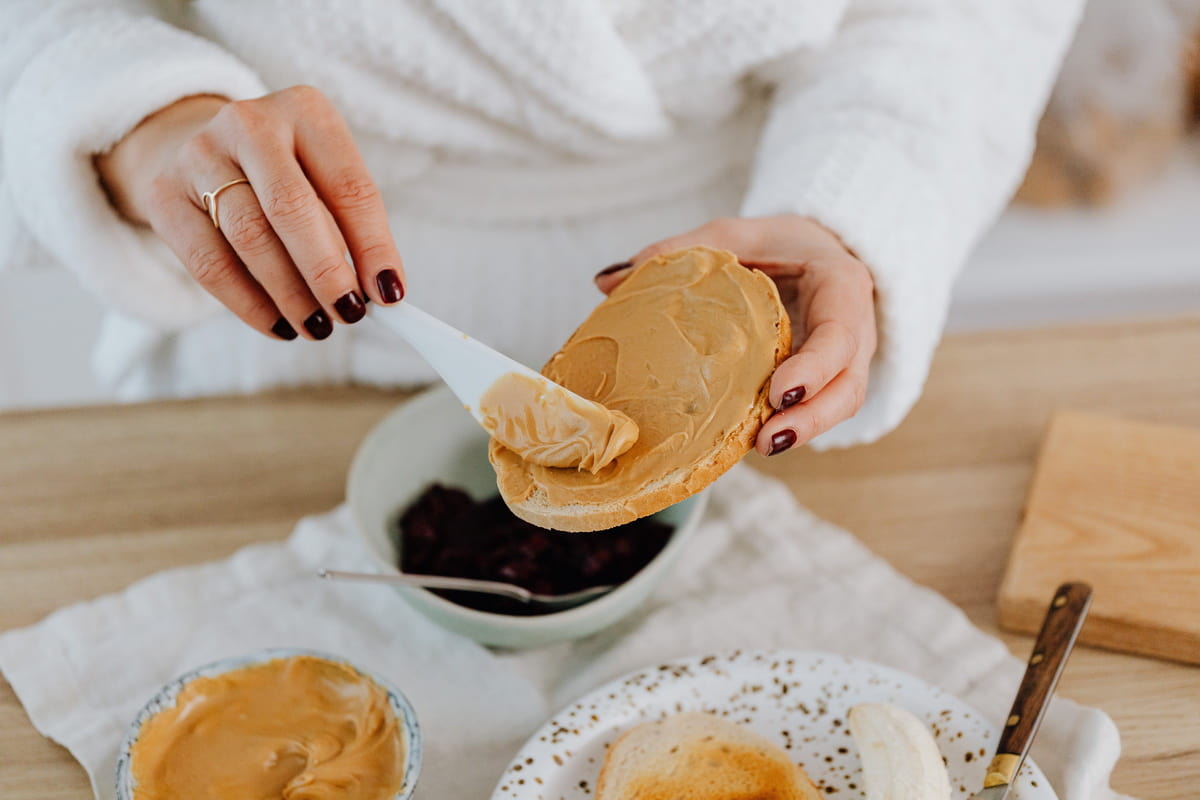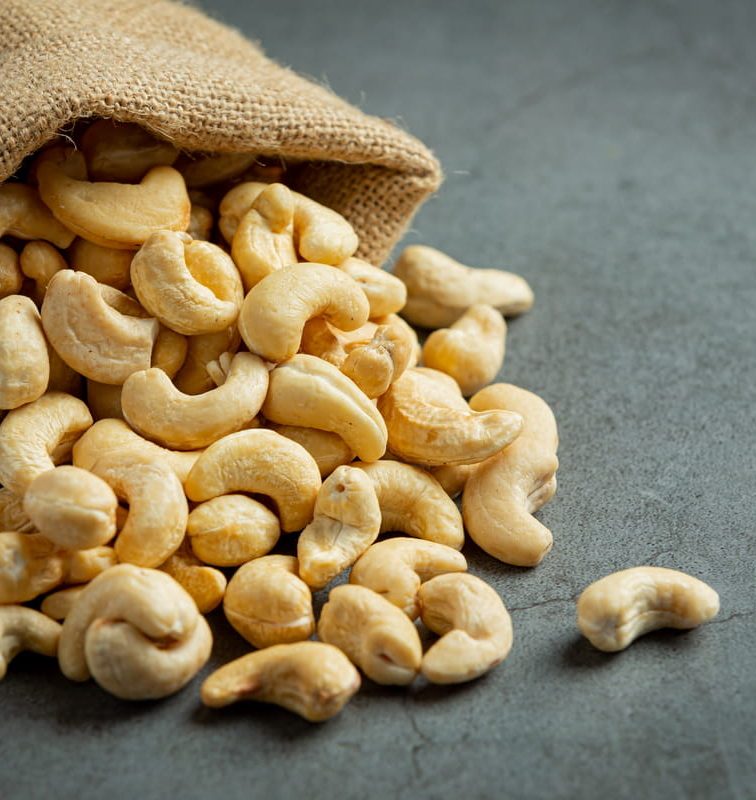Peanut butter, dating back to the ancient Aztecs around 1500 BC, has evolved from a basic paste to a staple in pantries worldwide. In the United States alone, it’s estimated that over 90% of households consume peanut butter, with an average annual consumption of about 1.5 billion pounds.
This spread has not only enriched our diets but also influenced culinary trends, nutrition research, and even space exploration. These fun facts about peanut butter reveal its journey from ancient times to a beloved modern-day staple.
1. Ancient Beginnings of Peanut Butter
The origin of peanut butter can be traced to the Aztecs and Incas around 1500 BC, who ground peanuts into a paste. This ancient version was used not just as a food source but also for medicinal purposes, like treating toothaches. The modern version of peanut butter, however, began to take shape in the late 19th century.
This transition from a simple paste to a kitchen staple over centuries highlights the enduring popularity of peanuts in human diets.
2. Peanut Butter’s Food Industry Revolution
Peanut butter, as we know it today, was patented in 1895 by Dr. John Harvey Kellogg. Initially intended as a protein-rich food for patients without teeth, it gained mass appeal at the 1904 St. Louis World’s Fair.
Peanut butter sales soared during the Great Depression due to its affordable protein content. By World War II, it became an essential part of American soldiers’ rations, highlighting its nutritional value and shelf stability.
Today, the U.S. is one of the largest consumers of peanut butter, with Americans eating around 700 million pounds annually.
3. Peanut Butter Treats in Presidential Diets
Peanut butter has been a White House favorite for decades. President Harry S. Truman, known for his simple tastes, regularly included it in his meals. President Jimmy Carter, who grew up on a peanut farm, often enjoyed peanut butter in various forms.
This connection with U.S. Presidents reflects peanut butter’s status as an American culinary icon, bridging different socioeconomic backgrounds and political statures.
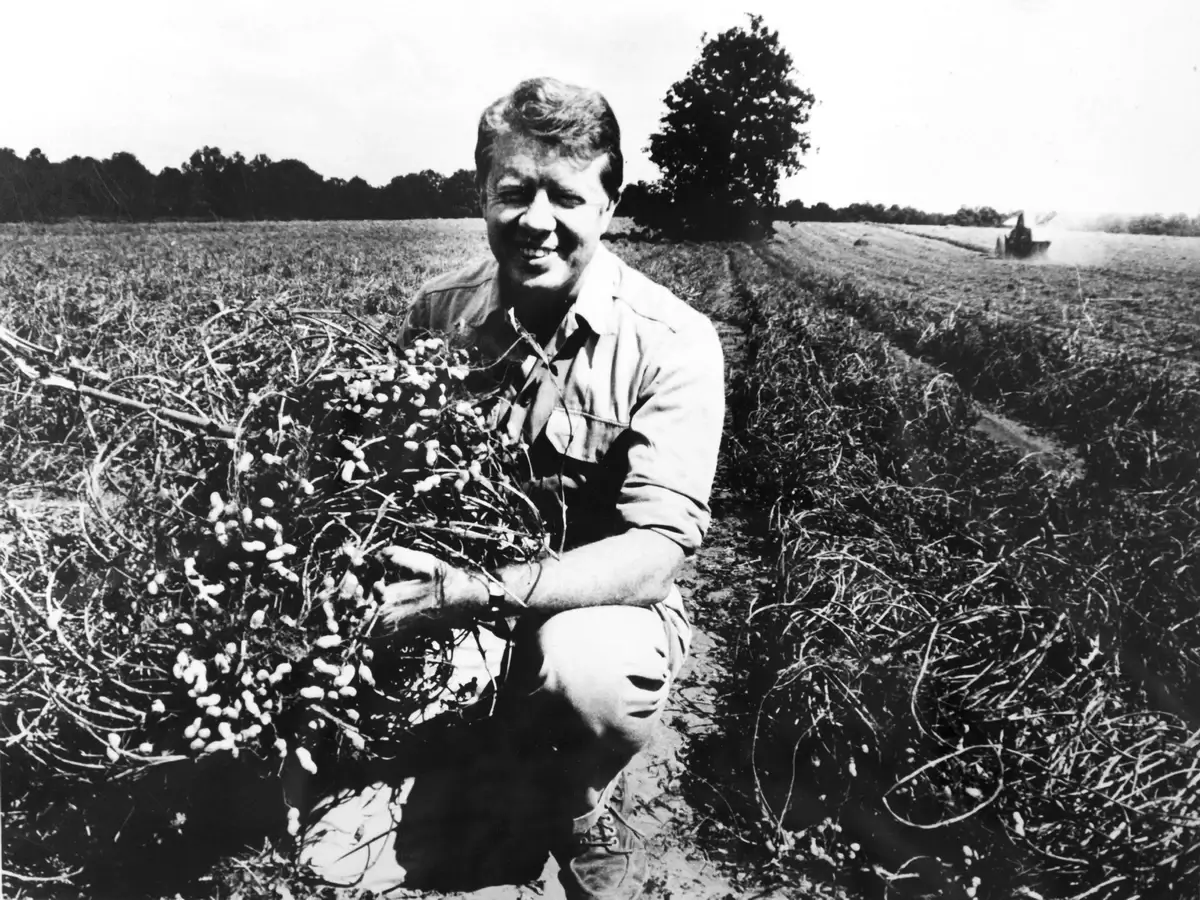
Jimmy Carter at the peanut farm. Image: insider.com
4. Nutritional Profile of Peanut Butter
Nutritionally, peanut butter is a powerhouse. A two-tablespoon serving provides 8 grams of protein, essential for muscle repair and growth. It’s also a good source of healthy fats, primarily monounsaturated and polyunsaturated, which are beneficial for heart health. Additionally, it contains vital nutrients like vitamin E, magnesium, potassium, and vitamin B6.
Despite these benefits, moderation is key due to its high calorie content, with one serving containing about 190 calories.
5. Peanut Butter’s Role in Space Missions
Peanut butter has been a favored food item in space missions since the early days of NASA. Its first recorded space journey was aboard Gemini and Apollo missions in the 1960s. The reason for its popularity among astronauts is its familiar, comforting taste, and its non-perishable nature, making it ideal for long missions.
Notably, peanut butter was part of astronaut meals on the International Space Station, demonstrating its versatility and appeal even in zero-gravity environments.
6. The Creamy vs. Crunchy Peanut Butter Rivalry
The debate between creamy and crunchy peanut butter is a longstanding one, with both versions having a dedicated fan base. According to a survey, approximately 60% of Americans prefer creamy peanut butter, while 40% favor the crunchy variety. This divide goes beyond texture, often reflecting personal taste preferences developed in childhood.
The rivalry, while lighthearted, underscores the diverse ways people enjoy this versatile spread.
7. Peanut Butter’s Worldwide Appeal
Peanut butter, while quintessentially American, has gained popularity globally. In countries like Canada and the Netherlands, it’s a common household item. Interestingly, in the Netherlands, it’s known as ‘pindakaas’ or ‘peanut cheese’ because the term ‘butter’ is legally reserved for products derived from milk.
The global market for peanut butter is projected to continue growing, reflecting its universal appeal across different cultures and cuisines.
8. Unique Uses of Peanut Butter
Beyond sandwiches, peanut butter has found its way into a variety of unique applications. It’s used in sauces, marinades, and dressings in many Asian cuisines. In baking, it adds richness to cookies and cakes.
Additionally, peanut butter has non-culinary uses, such as removing gum from hair or as a bait in mouse traps. Its versatility in both the kitchen and everyday life showcases its utility beyond being just a spread.
9. Peanut Butter’s Economic Influence
Peanut butter significantly impacts the economy, particularly in the United States, which is one of the world’s leading peanut producers and consumers. The U.S. peanut industry contributes over $4 billion annually to the economy, with peanut butter accounting for approximately half of the American peanut market.
This economic influence extends from farmers and manufacturers to retailers, illustrating peanut butter’s role as a key player in the agricultural and food industries.
10. Giant PB&J: A Peanut Butter Record
In 2010, Peanut Proud, a non-profit organization in Texas, set a Guinness World Record for the world’s largest peanut butter and jelly sandwich. The sandwich weighed an astonishing 1,342 pounds, with 950 pounds of peanut butter and 392 pounds of jelly.
This event not only celebrated peanut butter’s cultural significance but also highlighted the community spirit and ingenuity surrounding this beloved food item.
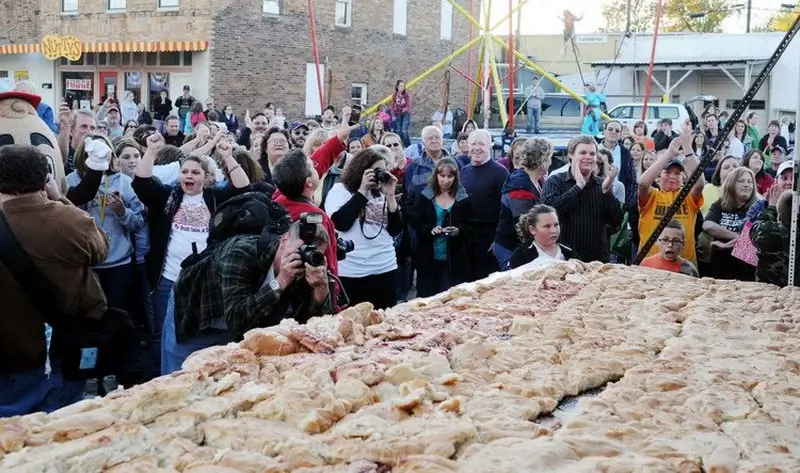
Image: X.com
11. Peanut Butter in Military History
Peanut butter has played a significant role in U.S. military rations since World War II. It was included in the soldiers’ K-rations due to its high protein content, long shelf life, and morale-boosting properties. Its energy-dense nature made it an ideal ration component, offering soldiers a taste of home while in the field.
The inclusion of peanut butter in military rations underscores its nutritional value and its comforting, familiar taste to American soldiers.

Image: X.com
12. Innovative Peanut Butter Flavors
The peanut butter industry has seen a surge in innovative flavors, catering to diverse palates and dietary needs. Beyond the classic creamy and crunchy, there are now varieties like honey-infused, chocolate-swirled, and even spicy peanut butter.
These innovations reflect consumer demand for variety and the adaptability of peanut butter to different taste preferences and culinary trends.
13. What Makes Peanut Butter Spreadable?
The spreadability of peanut butter is due to its unique composition. The perfect balance of fats, primarily monounsaturated and polyunsaturated, along with hydrogenation, prevents separation and maintains a spreadable consistency. Temperature also plays a crucial role; peanut butter spreads more easily at room temperature.
Understanding these factors helps in appreciating the science behind this everyday food item.
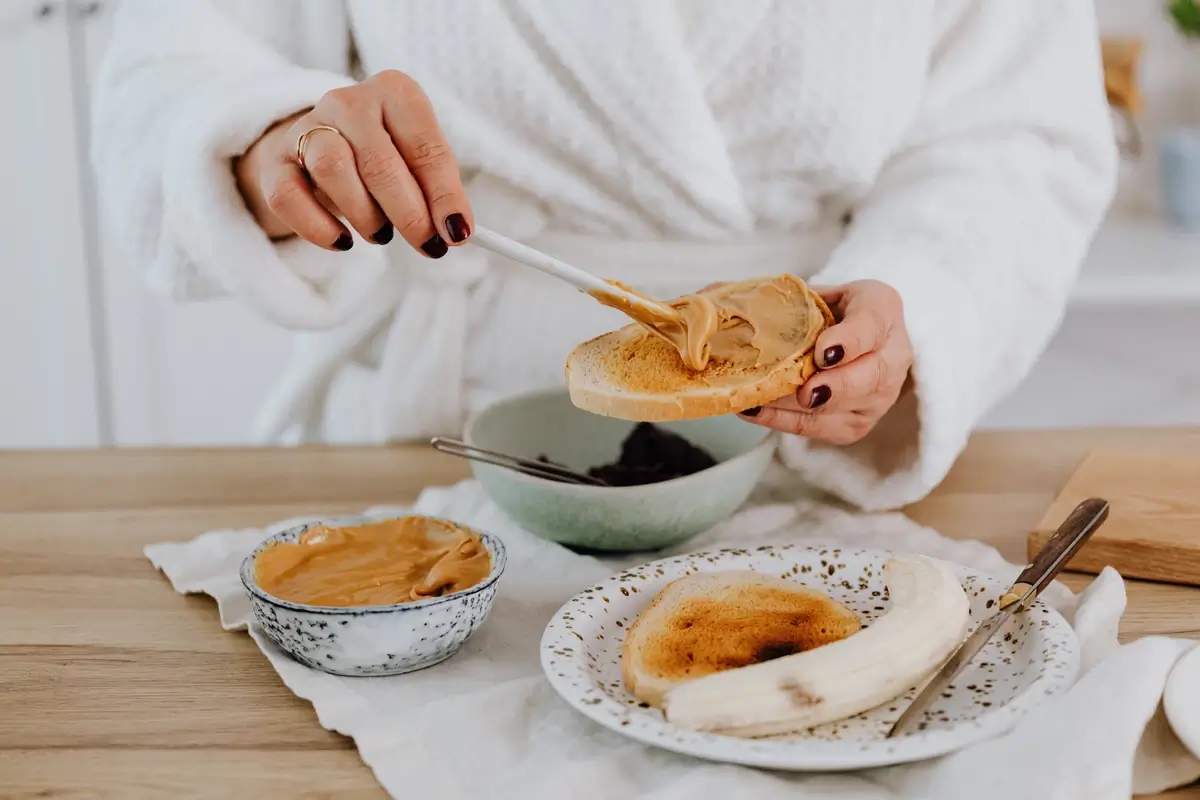
Karolina Grabowska / Pexels
14. Busting Peanut Butter Health Myths
There are several myths surrounding peanut butter’s health impact. Contrary to popular belief, when consumed in moderation, peanut butter does not contribute to weight gain. It can be part of a healthy diet due to its high protein and healthy fat content. Another myth is that peanut butter raises cholesterol levels, but studies show that it can actually improve heart health when included in a balanced diet.
Debunking these myths helps in recognizing peanut butter as a nutritious option.
15. The Art of Producing Peanut Butter
Producing peanut butter is a process refined over decades. After harvesting, peanuts are typically roasted at 240°C (464°F) to develop flavor. The precise roasting time is key: too short, and the flavor is underdeveloped; too long, and the peanuts burn.
The next step is grinding, where texture is determined. For smooth peanut butter, the grinding continues until the particles are less than 0.0014 inches in size.
Creamy or crunchy, the choice of texture affects both the production process and consumer preference, showcasing the intricate balance between art and science in food production.
16. Peanut Butter and Allergy Education
Peanut allergies affect approximately 1% of the U.S. population, with peanut butter often at the center of discussions. Recent studies, like the LEAP (Learning Early About Peanut Allergy) study, indicate early introduction of peanuts to infants can reduce the risk of developing allergies by up to 81%.
This evolving understanding of peanut allergies underscores the importance of ongoing research and education in dietary health and safety.
17. Peanut Butter’s Influence in Pop Culture
Peanut butter has a unique place in American pop culture. Elvis Presley’s fondness for peanut butter and banana sandwiches made this combination a cultural icon. In film, peanut butter finds mention in classics like “It’s a Wonderful Life” (1946) and “Twin Sitters” (1994), symbolizing comfort and nostalgia.
This spread’s journey from a simple food item to a pop culture staple reflects its deep-seated influence in American life and entertainment.
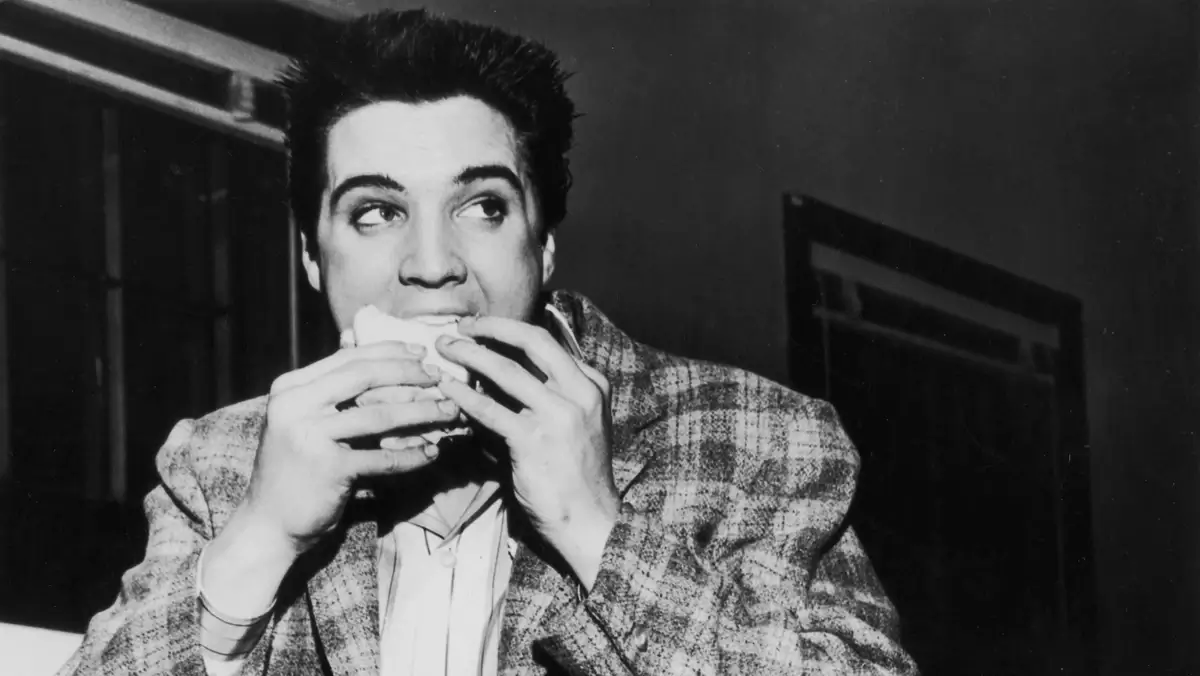
Elvis Presley eats a peanut butter sandwich. Image: wallsdesk.com
18. Peanut Butter and Sustainable Agriculture
In terms of environmental impact, peanuts require significantly less water than tree nuts, using only about 5 gallons of water to produce one ounce of peanuts. Sustainable practices like crop rotation enhance soil health and reduce the need for chemical fertilizers.
The peanut industry’s efforts towards sustainability highlight a commitment to environmental stewardship and responsible agricultural practices.
19. Peanut Butter in Animal Nutrition
Peanut butter, a popular treat for dogs, is valued for its protein content. However, not all peanut butter is pet-safe; brands containing xylitol, a sugar substitute, are toxic to dogs. Pet owners should choose peanut butter without xylitol and additives to ensure their pets’ safety.
This highlights the importance of ingredient awareness in pet nutrition.
20. Celebrating at Peanut Butter Festivals
In places like Brundidge, Alabama, the annual Peanut Butter Festival, held since 1991, celebrates the town’s heritage as a former site of a major peanut butter producing plant. These festivals often feature recipe contests and educational exhibits, attracting thousands of visitors.
They not only celebrate peanut butter’s culinary versatility but also its role in local history and community bonding.

Image: troymessenger.com
FAQ
Who invented peanut butter?
The invention of modern peanut butter is credited to Dr. John Harvey Kellogg, who patented the process in 1895. However, the concept of grinding peanuts into a paste dates back to ancient Mesoamerican cultures like the Aztecs and Incas.
Why does peanut butter have butter in the name?
Peanut butter gets its name due to its smooth, spreadable consistency, similar to dairy butter. Despite containing no dairy, the term “butter” effectively conveys its creamy texture and rich, spreadable nature.
Which president liked peanut butter?
President Jimmy Carter, who grew up on a peanut farm, was known for his fondness for peanut butter. His connection to peanuts extended from his childhood into his presidency, reflecting his agricultural roots.
Why is peanut butter famous?
Peanut butter is famous for its unique taste, versatility, and nutritional value. It’s a rich source of protein, healthy fats, and essential vitamins and minerals. Its popularity also stems from its widespread use in various cuisines, affordability, and long shelf life.
What is the earliest known consumption of peanut butter?
The oldest peanut butter eaten can be traced back to the ancient Aztecs and Incas, around 1500 BC. They mashed roasted peanuts into a paste, which is considered the earliest form of peanut butter. This ancient version was more rudimentary compared to today’s smooth or crunchy varieties.


